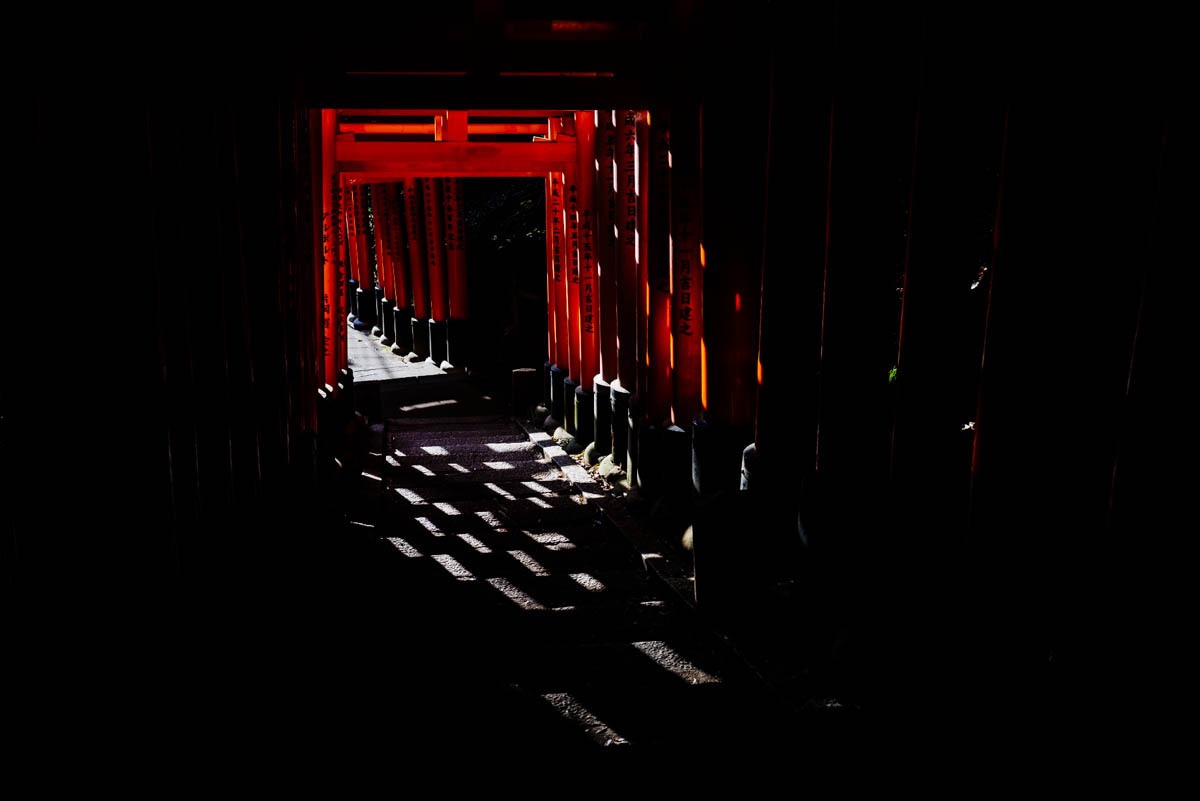Fushimi Inari - 伏見稲荷
If you were to think of “Japan”, there’s a high chance that you’d conjure up images of “red gates” in mountains, after you’ve thought about sushi, cartoon characters, neon lights, underwear vending machines, men in suits, business cards, bowing, sumo, blowfish… you get the idea. The red gates are in there somewhere.
These are the famous red gates of Fushimi Inari Taisha (伏見稲荷大社); the head shrine of Inari. As we know, these Torii gates mean Shinto.
View fullsize

The Torii gates along the entire trail are donations by individuals and companies, with the donator’s name and the date of the donation inscribed on the rear of each gate (so be sure to turn around). The starting cost is ¥400,000 ($4000 USD) for a small Torii, with the largest ones costing over one million yen ($10,000 USD).
Bargain!
Fushimi Inari is the most important of several thousands of shrines dedicated to Inari, the Shinto god of rice. Foxes are thought to be Inari’s messengers, resulting in many fox statues across the shrine grounds. I suppose this is why inari zushi is an odd sushi with the rice inside a pouch of fried tofu – and kitsune udon is udon noodles with a fried tofu topping (apparently the fried tofu is a popular food of the foxes… but in the UK, I know they eat anything).
There’s a 2–hour hike from the shrine to the peak of the Inari mountain, which was most enjoyable. The density of both gates seemed to be proportionally related to the density of tourists as we ascended the mountain – by the time we got to the top, there were only a few people taking in the (somewhat limited by trees) view.
It was actually rather dark by the time we got down to the foot of the mountain. About half-way through our descent, we bumped into a friendly family, young daughter leading the way, when the mother asked “is it worth it?”. She was both smiling and looking a little concerned at the predicament in which she found herself.
Both her and her husband were clearly not regular hikers, and were struggling a little. We gave the honest answer of “hmm, well, it’s more of the same really. The best view is another 15 minutes up the mountain. You can’t see much from the summit itself… so…. you wouldn’t miss much by turning around at the next viewpoint”.
Both her and her husband smiled with what was obviously some kind of relief, and carried on up the mountain.
“Have a good one!”